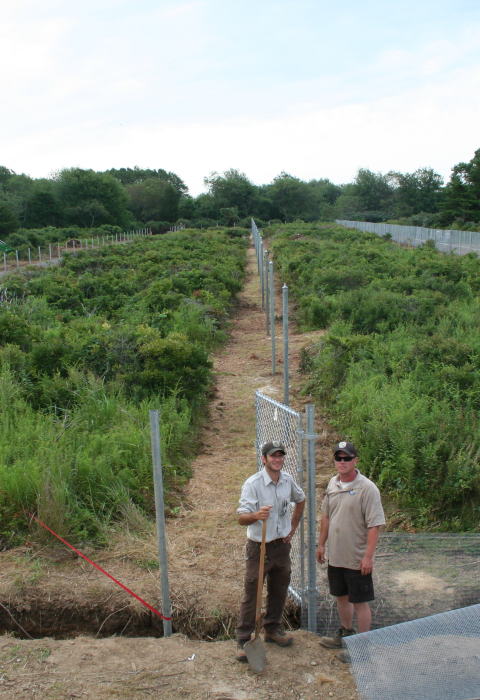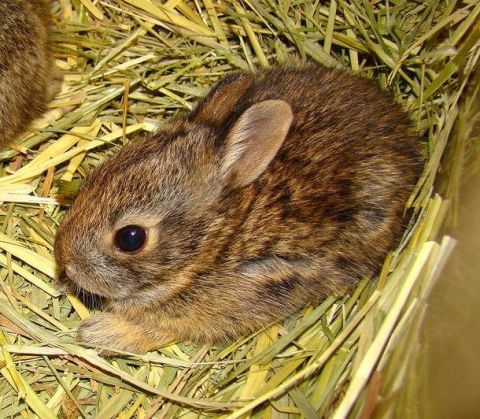Multi-Faceted Approach to Breeding Rabbits
Two zoos have bred hundreds of New England cottontails that conservationists use to boost populations throughout the species’ range and to start new populations in areas of good habitat.
Roger Williams Park Zoo in Providence, Rhode Island, began a breeding program in 2011, and Queens Zoo in New York started one in 2015. (In 2019, both zoos received a North American Conservation Award from the Association of Zoos and Aquariums for their efforts to help the New England cottontail.)
How It Works
Biologists capture cottontails from healthy wild populations. Genetics testing confirms that the rabbits are New England cottontails rather than similar-appearing eastern cottontails, which are not native to the region but are now abundant.
In the zoos, the New England cottontails, termed “founders,” produce litters of young. Founders are rotated out of the breeding program after two or three years and released back into the habitats where they were caught. Each year, biologists trap new animals and add them to the breeding programs.
Into the Wild
When they're old enough to make it on their own, zoo-bred rabbits are transferred to “hardening pens” on Ninigret National Wildlife Refuge in Rhode Island and Great Bay National Wildlife Refuge in New Hampshire. Fences keep out land predators like bobcats and foxes, and rabbits learn to hide in cover, feed on native plants, and find shelter during inclement weather.
After the rabbits adjust to an outdoor life, biologists release them in new locations. Zoo-bred rabbits have been used to start New England cottontail populations at Bellamy River Wildlife Management Area in New Hampshire and at Great Swamp Wildlife Management Area in Rhode Island.
Island Refuges
Conservationists have used both zoo-bred and wild-caught rabbits to establish populations on two brushy islands, 210-acre Patience Island in Rhode Island’s Narragansett Bay, and 628-acre No Mans Land Island in the Atlantic southwest of Martha’s Vineyard, Massachusetts.
Patience is closed to small game hunting, and Nomans Land, a former navy bombing range, is now a National Wildlife Refuge off limits to the public. Biologists keep tabs on the rabbits' health and reproduction. Periodically they capture young rabbits from these colonies and release them in suitable habitat on the mainland, starting new populations or strengthening existing ones.


